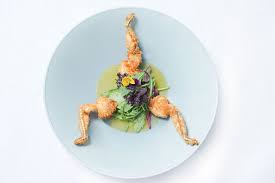
In a fit of radical chic, the Financial Times published Marianna Giusti’s interview with Marxist academic Alberto Grandi, in which the latter “debunks” (a popular activity these days) Italian food traditions, most of which are admittedly as new as Italy’s prosperity. It’s not a difficult task to take on if one has read more than online articles or cookbooks published in the last decade, and Grandi is, generally speaking, correct. But he undertakes his task with the zeal most debunking Marxists have, relishing the zingers and gotchas of slaughtering sacred cows. But where’s the beef? A few thoughts below.
Those who have followed Italian food writing for any decent length of time will also have read a few of Giusti’s lines before — but at least she has a roster of nonne and zie to call.
Italy was a poor country before the Second World War — of course no one could afford rich foods loaded with meat and cheese then. Spain is similar, of course, and I was baffled at some of the veggie-free and meat-heavy dishes on offer in Madrid a few years ago. Those of us with octogenarian Italians in their lives know that in the old days everyone just ate beans, soups, root vegetable, and, of course, bread. All the stale bread recipes! And if you don’t, you can read about it a book like La Luna e i Falò where the Piemontese peasants eat that stuff. Even in A Farewell to Arms it’s clear pasta and cheese is a big wartime luxury, although the wine is omnipresent in Pavese and Hemingway both. Primo Levi writes about fantasizing about pasta when he’s in Auschwitz.
My old haunt, Veneto Sud, is still especially strong on the soups, veggies, and stale bread menu. Maybe a few shellfish thrown in near the coast, and of course, polenta, especially the more north you go. Affettati sliced agonizingly thin to make the pork last all winter. Until recently, my Veneta (DOC) mother-in-law had never had a piadina. For my father-in-law, born in 1925, colazione was stale bread and coffee. Brioche? Mai.
It was educative for me to go to rural Balkans (which was still poor two decades ago) before Italy for see what pre-war other parts of southern Europe were like — many similar southern European food traditions, albeit with a Turkish spin, still being practiced. Most remarkable? The fridges were tiny. Not much industrial food to go in them. Basements for cans and bottles, other stuff fresh. A freezer for the annual pig slaughter.
I take some umbrage with the grouchy and puritanical Marxist point of view (also why is FT interviewing a Marxist?) that “everything dear to you is a lie, there are no traditions [left unsaid: there’s only oppression!].” These so-called debunkers are joyless, and I can’t stand Eric Hobsbawm and his quotidian ideas dressed up as something fancy. Married with the FT‘s typical neoliberal ultra-capitalist ideas that we’re all just postmodern blanks slates and life constantly mixing stuff up, it’s even more noxious.
Having said all that, I support syncretic traditions if they celebrate life and goodness. For example, I love Washington’s national mall, even if all the designs are obviously not “authentic” (taking inspiration from the same Palladian villas that dot the Veneto) and it’s a sort of a patriotic Vegas imbued with national character. “Italian” food is much the same and if impossibly rigid recipes in our time of plenty give people what they want, why not? Three cheese chicken tortellini are not to my palate anyway, so I don’t mind someone yelling about the right way to make them.
Finally, as a matter of adopted Chesapeake pride, I reserve the right to jones for at least three items which can’t (or shouldn’t) be found in modern Italy: a proper Baltimore Italian cold cut sub, meatball sub or pizza cheese steak (which I learned when I moved to Italy is a bistecca al pizzaiolo on a sub roll) — although I’m pretty sure all the Italian corner joints, still there in the nineties, are falafel shops by now. But I’ll only eat ’em in Bawlmur, hön.